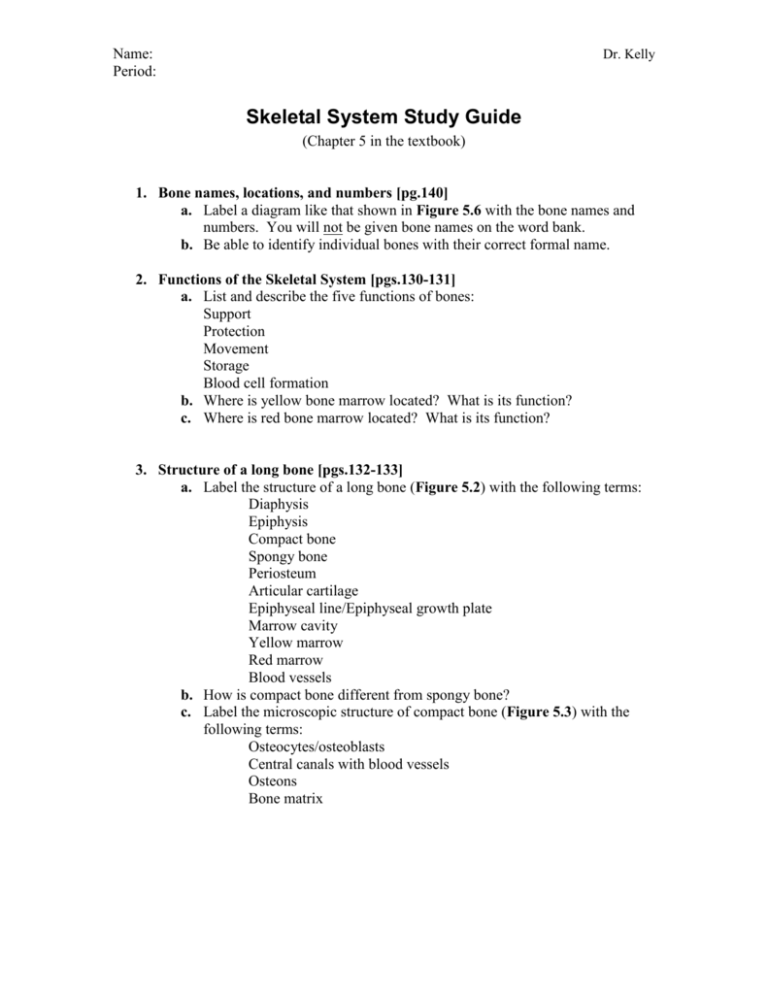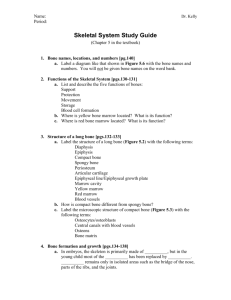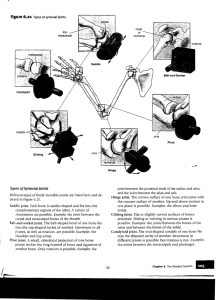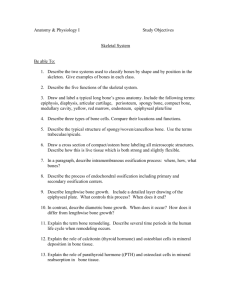The Skeletal System Study Guide
advertisement

Name: Period: Dr. Kelly Skeletal System Study Guide (Chapter 5 in the textbook) 1. Bone names, locations, and numbers [pg.140] a. Label a diagram like that shown in Figure 5.6 with the bone names and numbers. You will not be given bone names on the word bank. b. Be able to identify individual bones with their correct formal name. 2. Functions of the Skeletal System [pgs.130-131] a. List and describe the five functions of bones: Support Protection Movement Storage Blood cell formation b. Where is yellow bone marrow located? What is its function? c. Where is red bone marrow located? What is its function? 3. Structure of a long bone [pgs.132-133] a. Label the structure of a long bone (Figure 5.2) with the following terms: Diaphysis Epiphysis Compact bone Spongy bone Periosteum Articular cartilage Epiphyseal line/Epiphyseal growth plate Marrow cavity Yellow marrow Red marrow Blood vessels b. How is compact bone different from spongy bone? c. Label the microscopic structure of compact bone (Figure 5.3) with the following terms: Osteocytes/osteoblasts Central canals with blood vessels Osteons Bone matrix Name: Period: Dr. Kelly 4. Bone formation and growth [pgs.134-138] a. In embryos, the skeleton is primarily made of __________, but in the young child most of the __________ has been replaced by __________. __________ remains only in isolated areas such as the bridge of the nose, parts of the ribs, and the joints. b. What is ossification? c. What are bone-forming cells called? d. Cartilage-forming cells are called chondrocytes. e. What are bone-removing cells called? f. Where is articular cartilage located? What function does it serve? g. Where are epiphyseal growth plates located? What function do they serve? h. What is an epiphyseal line? i. Label long-bone formation and growth (Figure 5.4a). 5. Bone fractures and the healing process [Figure 5.5, pgs. 137-139] a. List and describe the four stages of bone fracture healing: Hematoma formation (approx. 30 minutes) Fibrocartilage callus formation (approx. 1 week) Bony callus formation (approx. 4-5 weeks) Bone remodeling (approx. 1 year) b. Know the common types of bone fractures shown in Table 5.2. c. What is a closed (or simple) fracture? d. What is an open (or compound) fracture? 6. Joints Types of joints [pgs. 163-165] a. Describe and provide examples of the three major types of joints. b. Be able to label Figure 5.27 with the following terms: Fibrous joints Cartilaginous joints Synovial joints c. What are tendons? d. What are ligaments? Types of synovial joints [pgs. 165-167] a. Provide an example of each type of synovial joint. b. Identify and label the types of synovial joints in Figure 5.29 with the following terms: Hinge Ball and socket Plane Saddle Condyloid Pivot








